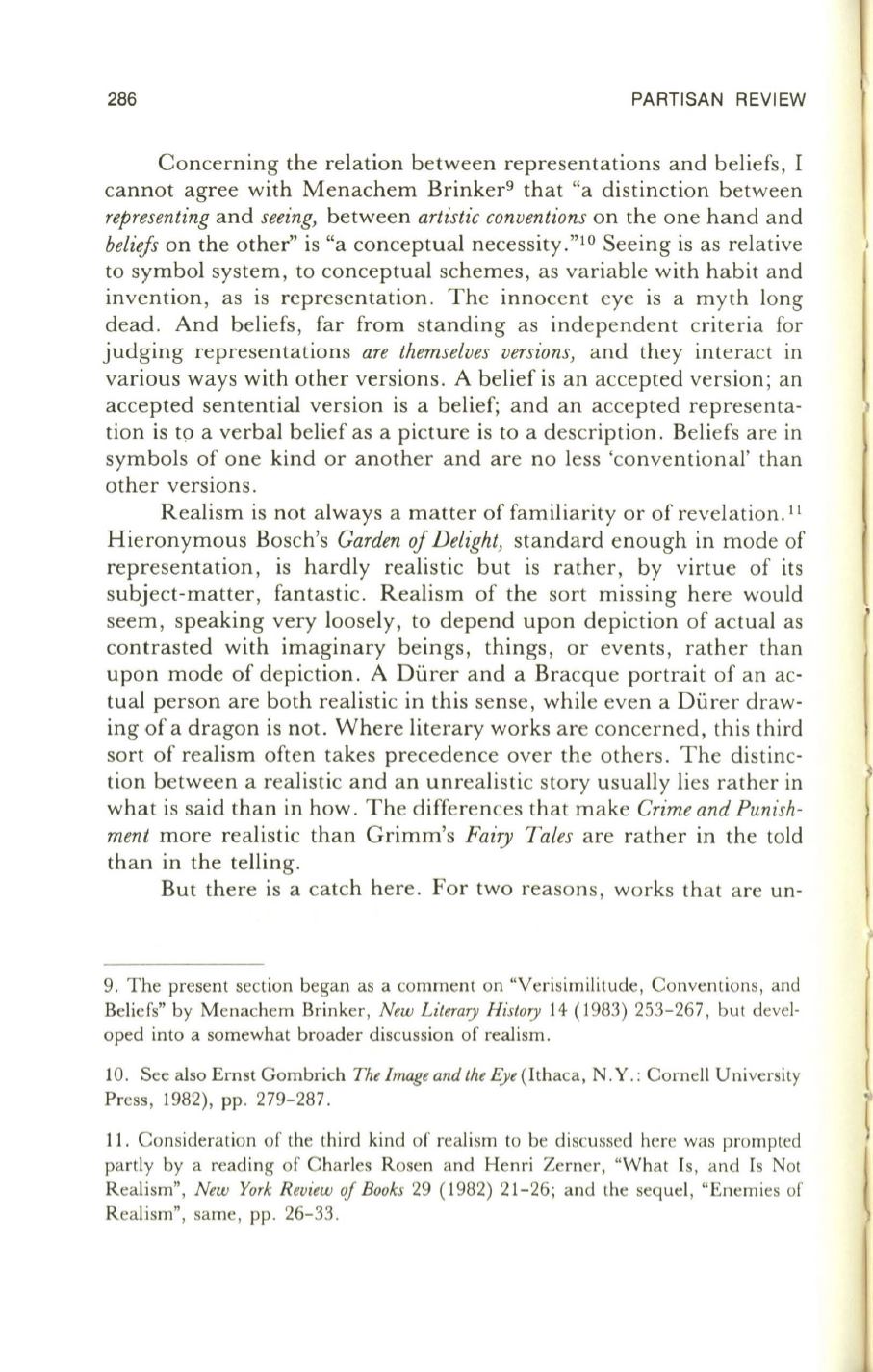
286
PARTISAN REVIEW
Concerning the relation between representations and beliefs, I
cannot agree with Menachem Brinker
9
that "a distinction between
representing
and
seeing,
between
artistic conventions
on the one hand and
beliefs
on the other" is "a conceptual necessity."
I0
Seeing is as relative
to symbol system, to conceptual schemes, as variable with habit and
invention, as is representation. The innocent eye is a myth long
dead. And beliefs, far from standing as independent criteria for
judging representations
are themselves versions,
and they interact in
various ways with other versions. A belief is an accepted version; an
accepted sentential version is a belief; and an accepted representa–
tion is to a verbal belief as a picture is to a description. Beliefs are in
symbols of one kind or another and are no less 'conventional' than
other versions .
Realism is not always a matter of familiarity or of revelation.
II
Hieronymous Bosch's
Garden of Delight,
standard enough in mode of
representation, is hardly realistic but is rather, by virtue of its
subject-matter, fantastic. Realism of the sort missing here would
seem, speaking very loosely, to depend upon depiction of actual as
contrasted with imaginary beings, things, or events, rather than
upon mode of depiction. A Durer and a Bracque portrait of an ac–
tual person are both realistic in this sense, while even a Durer draw–
ing of a dragon is not. Where literary works are concerned, this third
sort of realism often takes precedence over the others. The distinc–
tion between a realistic and an unrealistic story usually lies rather in
what is said than in how. The differences that make
Crime and Punish–
ment
more realistic than Grimm's
Fairy Tales
are rather in the told
than in the telling.
But there is a catch here. For two reasons, works that are un-
9. The present section began as a comment on "Verisimilitude, Conventions, and
Beliefs" by Menachem Brinker,
New Literary History
14 (1983) 253-267,
but devel–
oped into a somewhat broader discussion of realism.
10. See also Ernst Gombrich
The Image and the Eye
(Ithaca, N. Y.: Cornell University
Press,
1982),
pp.
279-287.
11.
Consideration of the third kind of realism to be discussed here was prompted
partly by a reading of Charles Rosen and Henri Zerner, "What Is , and Is Not
Realism" ,
New York Review
oj
Books
29 (1982) 21-26;
and the sequel , "Enemies of
Realism", same, pp.
26-33.


